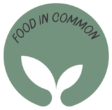In light of the many foodie controversies last week, over breakfast I read Alicia Kennedy’s fantastic newsletter about the complexity of food and what both consumers and media enjoy embracing (picture friendly dishes, made by picture friendly people, that tastes good!)…and what we shy away from because it’s uncomfortable and highlights a bunch of systemic issues that we’d rather not think about so we can just! enjoy! the! food! Food sourcing, economic justice, and cultural appropriation of cuisines come to mind.
As a dietitian tired of mainstream health media, I think there is an added layer that doesn’t always get talked about in these conversations.
To start: What does eating “healthy” look like, according to diet culture? The following words come to mind: 1200 calories, egg whites, lettuce salads, quinoa, and broccoli (Side note: please don’t eat only 1200 calories!).
Which brings me to my second point – health media and diet culture is very, very good at whitewashing ingredients and repurposing them to fit the narrative of a healthy Western diet. Just one example is quinoa, an ancient grain that was regarded as sacred and “mother of all grains” by the Incas almost 5,000 years ago, being relegated to a good source of protein and vitamin B6. And in the same breath, they will demonize other cultural staples around the world (like white rice), leaving many non-white people wondering, whose food is okay and whose isn’t? Rarely do we see adequate homage paid to the ethnic roots of foods that so many people find “healthy” these days, as well as a true embrace of an entire culture’s food heritage. What seems “acceptable” for food and health media alike seems pretty cherry-picked.
